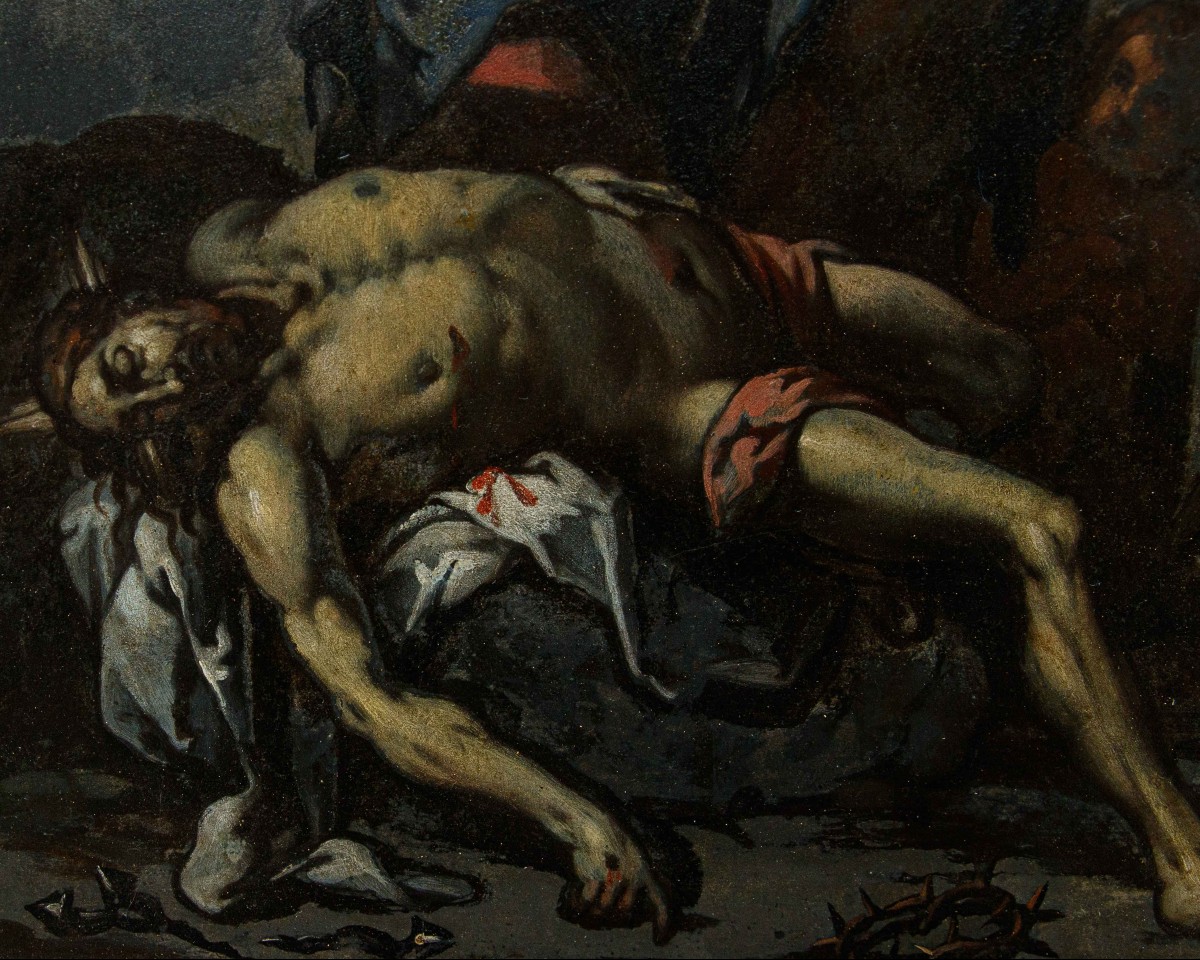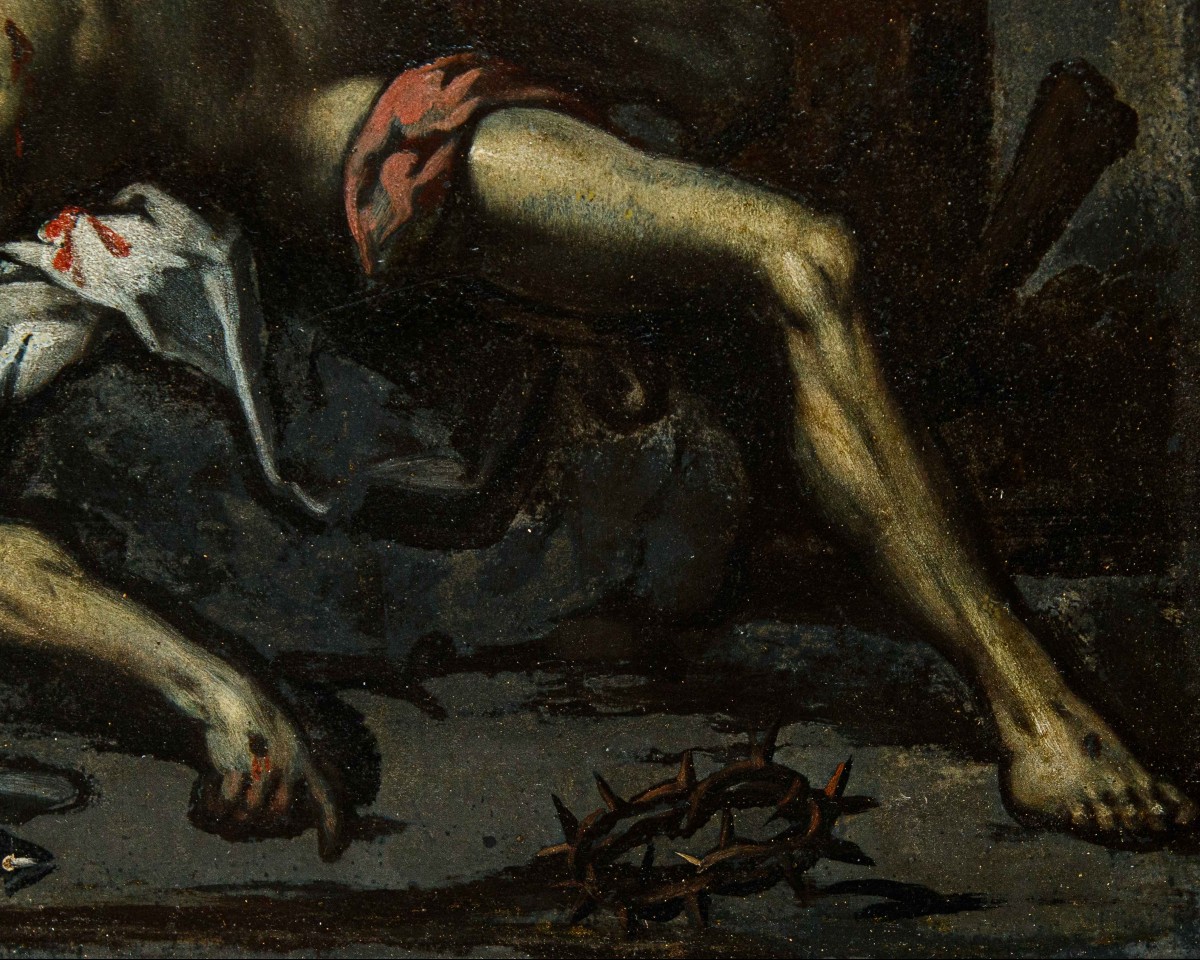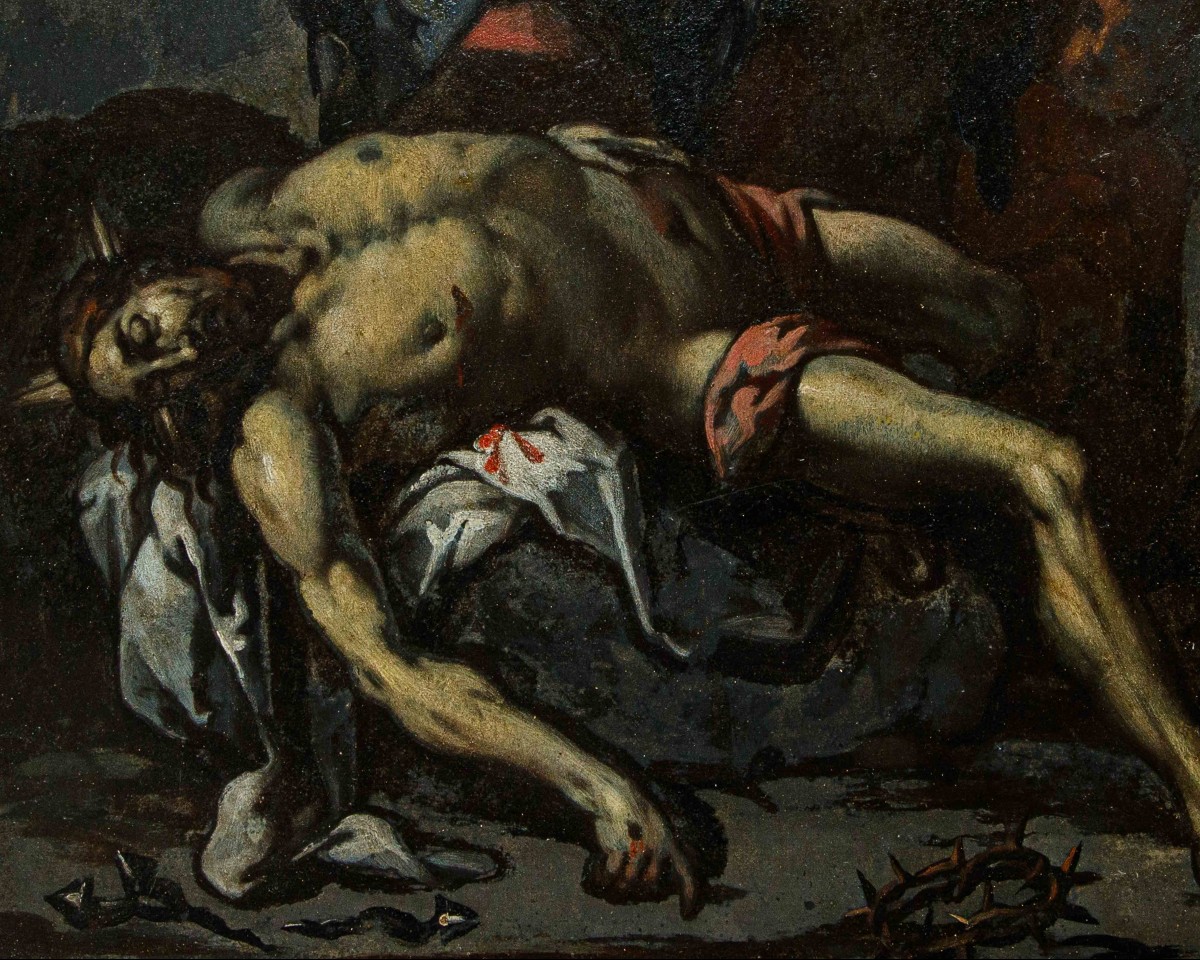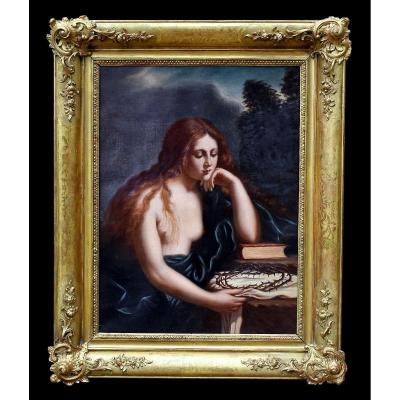Mourning over the dead Christ
Oil on board, cm 37.5 x 23.5
With frame, cm 52 x 39
The work described here presents unique elements starting from the chosen support to represent it: a limestone as the blackboard, or slate, of blackish color and already by its nature divided into thin plates but still easy to work and smooth in view of similar use. The use of supports in stone, including marble, was already used by the ancients but over time and especially for reasons of transportability and heaviness it was not used with the same frequency. In Veneto, and particularly in Verona, there was an increase in slate painting between the seventeenth and seventeenth centuries so that even great masters such as Titian, Leandro Bassano and Sebastiano del Piombo tried this type of support. In Verona we have the example of Giovanni Battista Amigazzi (1589-1651), but there are many works painted on stone that are kept in museums such as Palazzo Maffei or the Museum of Castelvecchio. The desire to imitate the painting on stone supports derived from the ancients, the ability to retain color, In addition to that of conserving the best from chromatic spoliations and finally the extreme nobility of the materials convinced the Venetian artists to opt for this kind of material. The scene of the Mourning is revealed with an extreme tragedy, both in the poses and in the expressions of Christ and the Virgin as he looks at the divine light coming from above. The background and the ground are realized in a range of greys that enhance and focus the viewer’s attention on the colors of the skins and draperies, made even more shiny, almost enamelled, through the particular technique of imprint on the slate.






































 Le Magazine de PROANTIC
Le Magazine de PROANTIC TRÉSORS Magazine
TRÉSORS Magazine Rivista Artiquariato
Rivista Artiquariato